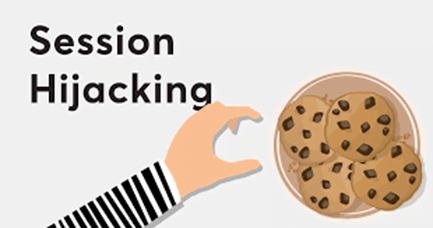Session Hijacking And Its Prevention – What Are The Main Aspects We Should Look Out For?

Session Hijacking
Session hijacking can be done when a user session is hijacked by the hacker when he is currently logged in and lose control of the session, then the hacker can easily steal their personal data, bank details whenever a user starts a session and log in into bank websites. While hijacking a session the hacker needs to know the victim’s cookie session. Although hackers can hack any session, it is mostly done on web applications. This is also done by an ethical hacker to check for vulnerabilities.
How is Session Hijacking done?
There are many ways an attacker can hijack a user’s session. Some of them are listed below:
- Cross-Site Scripting (XSS)– Attackers exploit vulnerabilities within applications or servers to inject JavaScript. It is done on the client-side of the user’s web page, causing their browser to execute arbitrary code when it loads a compromised page. If the server doesn’t set the HTTP session cookies, injected scripts can gain access to your sessions, providing all the information to the attacker for session hijacking.
- Session side jacking – If an attacker uses packet sniffing, then he can monitor the traffic and after authentication is done by the user, he can intercept the user’s cookie session. If the websites use SSL/TLS encryption for their login page only, then the attacker can use the session key he stole while packet sniffing to hijack the user’s sessions and impersonate them to perform actions into a web application. It usually happens in case of unsecured Wi-Fi to gain access to the network, monitor traffic or set up the access point to attack.
- Session Fixation – In this attack, the attacker supplies a session key and spoofs the user into accessing a vulnerable server of his own.
What are the ways of prevention?
Now as we have seen how Session hijacking is done. So here are some ways we can reduce the risk of session hijacking from happening:
- HTTPS: In HTTPS the S stands for Secure which means there is SSL/TLS encryption through the session traffic. The attacker will not be able to intercept the plain text session ID even if the victim’s traffic is monitored.
- System Updates: Basically, the user has to install an antivirus that can easily detect viruses and protect the computer from any malware used for session hijacking. The user must keep his system updated by automatically setting up updates on his device.
- Session key: it is recommended to regenerate session keys after the initial authentication. This changes the session ID which is extracted by attackers will be useless as the ID will be changed after initial authentication.
- VPN: VPN (Virtual Private Network) is the most recommended against session hijacking. VPN masks your IP and keeps the session protected by creating a private tunnel through which all the activities will be encrypted.
Now we understand how Session Hijacking works and what impacts it can do. The loss of personal banking information can lead to many things and other private information. To overcome this provided above are some measures that are used to secure your Network Infrastructure. If you want to secure your network infrastructure, cloud solutions, and data center services you can contact us at +919773973971.
Author
Shivam Rana
Associate Consultant

14 Best Cyber Security Practices | Zindagi Technologies
April 12, 2023[…] are on the wrong side. According to the statistics if you are a small business then you come under 43% of the aimed cyberattacks on […]